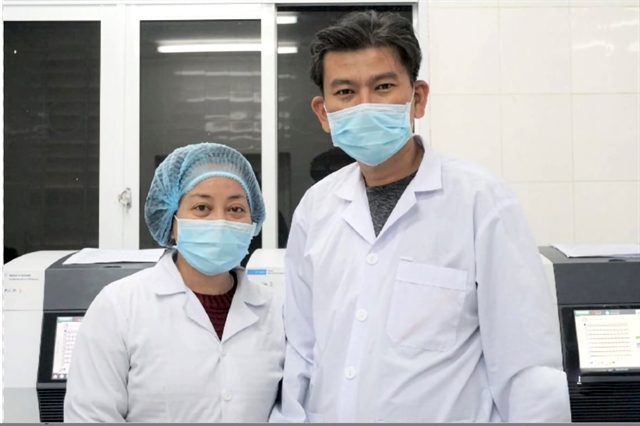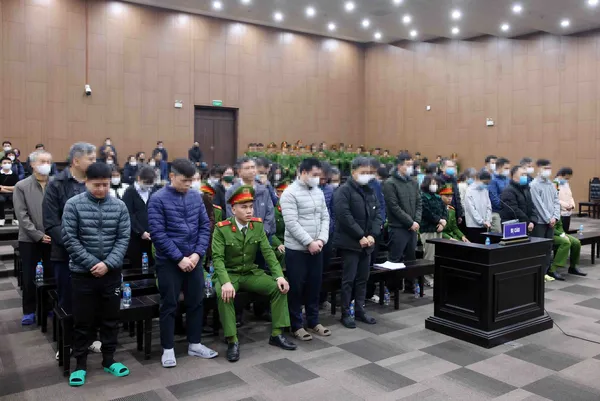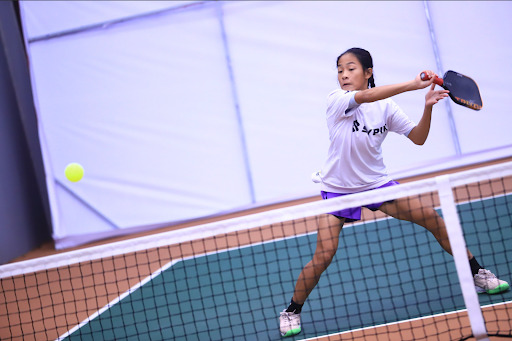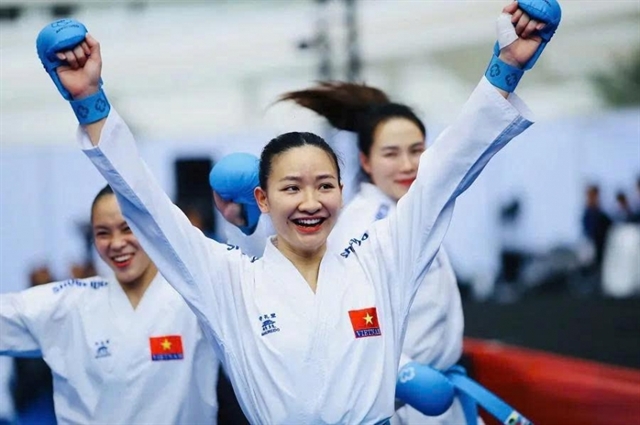 Society
Society

Nguyễn Danh Duy and Phạm Bích Kiểu, two molecular biologists in HCM City, will never forget the moment they saw their seven-year-old son eagerly waiting for them to return home.

|
| Nguyễn Danh Duy and Phạm Bích Kiểu, two molecular biologists in HCM City, work at a lab in Hải Dương CDC. — Photo vietnamnet.vn |
HCM CITY — Nguyễn Danh Duy and Phạm Bích Kiểu, two molecular biologists in HCM City, will never forget the moment they saw their seven-year-old son eagerly waiting for them to return home.
The boy, their only son, had been to his grandparent’s house in southern Bình Thuận Province after the couple volunteered to go to Hải Dương Province, a coronavirus epicentre, in January.
When the car stopped, the boy rushed to hug the couple as soon as they got out of the car.
Carrot, the boy’s nickname, hadn’t seen his parents for nine months. He couldn’t imagine he would be away from his parents for so long, and neither could Duy and Kiểu.
In January, Carrot was sent to the grandmother’s house, and then moved back to HCM City and stayed with his teacher for a while before moving to his grandmother’s house in Bình Thuận Province.
“I was startled to see that my son had grown so much. He was tanned and his legs were longer. I’d been away from my child for a long time,” Kiểu told online newspaper vietnamnet.
“He kept saying ‘I miss you so much’ to his father when he was in his arms, and then laughed and turned to tease me saying that he didn’t miss me.”
In the morning of January 30, Duy, 43, and Kiểu, 40, received an urgent call from a colleague who was conducting COVID-19 tests in Hải Dương – the largest epidemic centre in the country at the time.
The situation was urgent and he needed the help of the two experts. They immediately agreed.
At that time, the couple's private laboratory was under construction, and they asked for four more days to arrange things before going to the epicentre.
However, they received a second call later that day. The colleague said the number of patient samples was increasing so fast that Hải Dương CDC couldn’t handle them all.
Duy quickly changed his plane ticket and booked the earliest flight for the next morning.
"The situation was so urgent. We had no choice but to leave everything and go," Kiểu said.
On the morning of January 31, the two experts arrived at Hải Dương CDC. They were assigned to be responsible for the entire testing team. In the early days, they both directly handled samples, and trained and guided technicians and medical students.
When the team became more proficient, they focused on analysing and reporting results, combined with monitoring the entire process.
In the first two months, the testing team started work around 7-8am, finishing about 2am.
“There were days when I had to work until 4am to finish the job. There were days when I went back to my room but couldn’t sleep because I was too tired," said Duy.
The biggest pressure was time and accuracy. The early finding of a positive case could help the epidemiological unit quickly trace F1 cases and get the pandemic under control. Just a minor mistake in the testing could cause a series of problems later.
It was the first Tết holiday that Duy and Kiểu were away from home and their child. There were no peach blossom or kumquat trees, but piles of papers and data.
When the outbreak was gradually put under control, the two experts planned to reunite with their son. However, after two weeks of quarantine, the pandemic broke out in the provinces of Bắc Giang and Bắc Ninh.
They received a call from their colleagues in the two provinces, and they decided to go there.
In the next months, they received many calls from their colleagues in central Nghệ An, Hà Tĩnh, and back in HCM City, and then southern provinces of Bình Dương, Bà Rịa-Vũng Tàu and Phú Yên.
They never said no to a single call.
The pandemic became more complicated, and the workload increased every time they moved to a new epicentre.
Kiểu said she and her team had to work non-stop for 36 hours to respond to the huge sample numbers. Sometimes, lunch was the only meal of the day so they could have more time to finish the job.
She said she ate out of a lunch box for nine months. Mostly it got cold, so she was obsessed with the type of box.
“Rice was always put in a black box with a transparent lid, for every province. To be honest, I get scared every time I see that kind of lunch box now," she said.
Duy and Kiểu often took advantage of lunchtime to make phone calls to their son. Sometimes, they could only call their son once every few days, especially when the pandemic broke out in HCM City.
Kiểu said she usually sent voice messages to her son. She always kept an optimistic and tough spirit, and encouraged him to think positively when they were away.
She said Carrot was smart and never complained or cried when she called him, but confided to his grandmother that he was sad as his parents had to work far away.
Carrot’s teacher told her that when she asked why the boy cried, he said that he missed his mother, and that he remembered a time when mother fell and hurt her spine, and he took rice to her as she couldn’t move.
“That time I had to stay in one place for 20 days. Carrot's father was away, so there was just me and him at home,” she said.
Kiểu said that her difficulties might not even equal to those of many of her colleagues.
A male colleague in HCM City couldn’t do anything when his daughter, who suffered from severe autism, cried and refused to eat as he was away from home for so long.
However, due to the nature of his work he could not return home.
When the pandemic in the southern provinces passed its most stressful period, Duy and Kiểu set off to return home. They took their son home and continued completing their laboratory.
Kiểu said she and her husband loved their job more after the trip, as they had sharpened their professional skills and received much love from both colleagues and patients they had met.
“If you can help people, you should help," she said. — VNS




